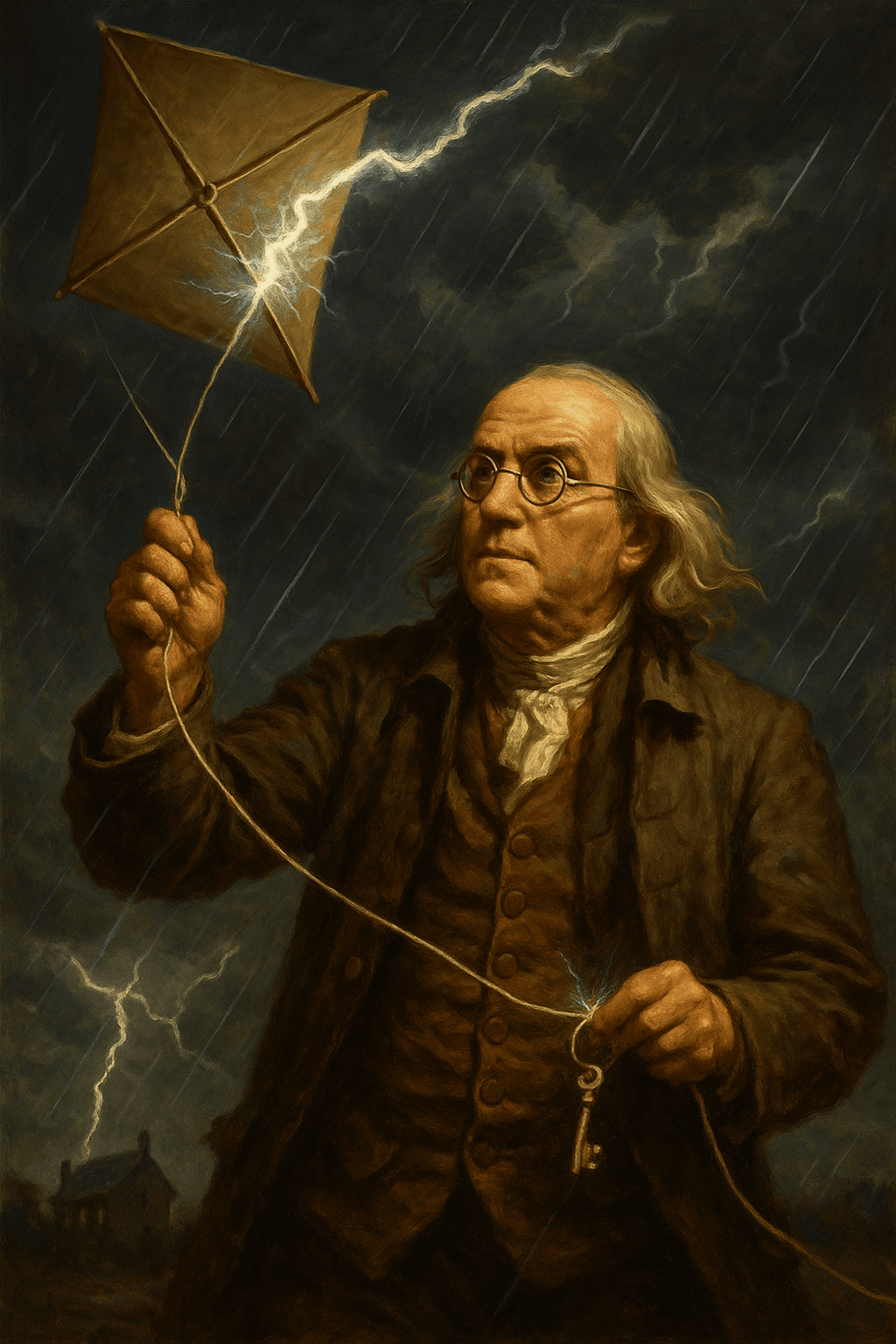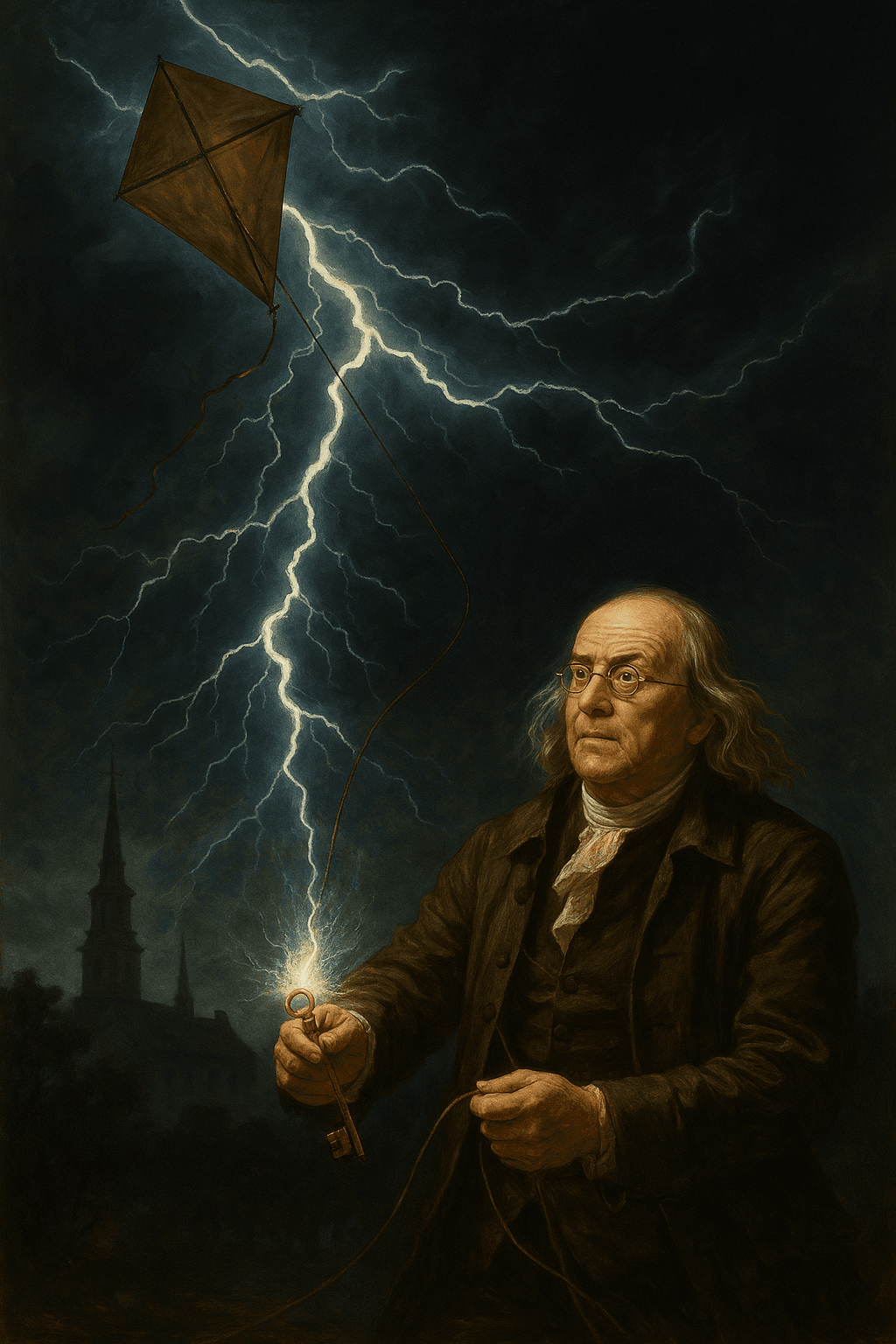On June 10, 1752, Benjamin Franklin conducted one of the most legendary experiments in the history of science. During a thunderstorm in Philadelphia, Franklin flew a kite fitted with a metal key and a silk string to demonstrate that lightning is a form of electricity. This simple yet daring experiment not only confirmed a major scientific theory but also revolutionized our understanding of atmospheric phenomena and paved the way for practical innovations like the lightning rod.

Long fascinated by electricity, Franklin had already conducted numerous experiments using Leyden jars and electrostatic machines. But lightning—mysterious and deadly—remained poorly understood. Franklin hypothesized that it was the same form of electricity produced by man-made devices. Inspired by recent European discoveries, he devised a plan to prove this connection through direct observation.
Instead of climbing a church steeple, as he originally proposed in a 1750 paper, Franklin waited for a thunderstorm and launched a kite made of silk, with a metal wire at the top and a key attached to the string. By holding the kite string with a dry silk ribbon (an insulator), he avoided being electrocuted.
As the storm raged and lightning struck nearby, Franklin noticed sparks jumping from the key when he brought his knuckle close—an unmistakable sign of electrical charge. The kite had collected electricity from the storm clouds, confirming his hypothesis that lightning is a natural electrical discharge.
This experiment was a watershed moment in the field of electricity. It shifted the scientific consensus, providing concrete evidence that electricity existed in nature and could be studied, understood, and harnessed.

Franklin’s findings led directly to the invention of the lightning rod, a simple metal rod mounted on buildings and connected to the ground to safely redirect lightning strikes. This innovation dramatically reduced deaths and property damage from lightning, making it one of the earliest practical applications of scientific research for public benefit.
Franklin’s work helped spark the broader Enlightenment movement, where reason, experimentation, and empirical evidence became the cornerstones of knowledge and progress.

Franklin’s kite experiment on June 10, 1752, remains one of the most iconic demonstrations in the annals of science. It symbolizes not only the thrill of discovery but also the transformative power of curiosity, ingenuity, and hands-on experimentation.
By daring to fly a kite into a storm, Franklin didn’t just capture lightning—he illuminated a path for generations of scientists and inventors to follow, forever altering our relationship with the forces of nature.